PIACENZA - BETTOLA AGRIWAY
Reconnecting Valnure through the old railway and urban agriculture
Student: Eleonora Vaccari
Academic tutor: Paola Nella Branduini


Reconnecting Valnure through the old railway and urban agriculture
Student: Eleonora Vaccari
Academic tutor: Paola Nella Branduini

I would like to express my special thanks of gratitude to my academic tutor, professor Paola Nella Branduini, for her multiple advices and constant supervision of my progresses during these months. I am deeply grateful for her help in completing this project.
I would also like to thank my beloved family, that keeps supporting me with their love and guidance, in order to purse my goals, and my friends and colleagues that offered great help during the project researching period: Qiongchun, Sofia, Eleonora, Yagmur, Laura, Rossella. Without all of you, many obstacles would have been impossible to overcome.
INTRODUCTION
PiacenzaBettola agriway project abstract, idea explanation
1 2
HISTORICAL AND LANDSCAPE ANALYSIS
RAILWAY HISTORY from tramway to railway EFFECTS ON LANDSCAPE LANDSCAPE ANALYSIS diachronic maps, synchronic map, land use, trees and woods, cultivations
RAILWAY ANALYSIS
landscape changes, original path, recognizable train stations
3
SWOT AND STRATEGIES
SWOT ANALYSIS connection and sustainability STRATEGIES existing project Europe 2020 strategy DESIGN TIMELINE year 1, 5, 10 CASE STUDIES bicycle paths and urban gardens
PROJECT MASTERPLAN AND DESIGN GUIDELINES PROJECT MASTERPLAN 1:50000
DESIGN GUIDELINES
agriway signs from railway to agriway (original path)
from railway to agriway (new path) railway storytelling
4
SOCIAL AGRICULTURE AND GREEN CORRIDOR AGRIWAY green corridor and green patches local vegetation_ preserving biodiversity community garden strategy + masterplan garden expansion alternative garden
5
BIKE LANE TYPES AND INTERVENTIONS
CYCLE WAY TYPES interventions_details
Piacenza
Podenzano
Vigolzone
Ponte dell’Olio
Bettola
6
DETAIL SECTIONS AND ESTIMATED COSTS
DETAIL BIKE LANE sections and estimated costs
Piacenza - Bettola railway is a former railway that crossed the city of Piacenza and the Valnure area to reach the town of Bettola. It worked from 1933 to 1967, before it was shut down because of economical reasons.
The area was still crossed by the Provincial road but the ride became longer and with setbacks, thus cutting off the Val Nure towns from having a real connection with Piacenza, and while some cities grew in size other shrunk because of the lack of opportunities.
The idea behind the project is to create a new sustainable mobility for the area through the use of bicycles, connecting cities with the help of their shared culture and memories of the past, and giving this mobility a new sense of purpose and an evolving future, reinventing the concept of “greenway” with the addition of green patches of urban agriculture.
The new mobility system can’t replace the time efficiency of the former one, the goal is to use a vehicle that gives enough speed to cross the whole area but still gives time to explore it and learn about the Valnure heritage, the history of the railway and the landscape variety that is the peculiarity of this region.

1880 April 15
“The Piacenza-Bettola and Cremona Tramway Company Ltd” was created.
Piacenza-Bettola railway was born as a tramway at the end of XIX century and was a source of inspiration for the people of Val Nure valley. Its construction changed deeply the development of the areas it crossed, helping the growth of industrial activities and mostly ending those territories isolation, since they were far from the main national traffic points.
1881 May 16
The line was opened to the public. It was 22km long, from Piacenza to Grazzano Visconti, to Ponte dell’Olio.
The first projects for the construction of a great network of tramway lines in Cremona and Piacenza provinces started from the second half of XIX century. On April 15, 1880 the “The Piacenza-Bettola and Cremona Tramway Company Ltd” was created. This company born in London had the goal to build and manage two lines with steam traction: one from Piacenza to Bettola, another from Piacenza to Cremona.
1881 June 14
The line was finalized on June 14, 1886, with the opening of the Grazzano Visconti-Rivergaro ramification.
The project regarding the construction of a steam tramway, with a gauge of 1435mm, from Piacenza to Bettola, and ramification to Grazzano Visconti-Rivergaro, was immediately approved. After a first test, on May 16, 1881 the line was opened to the public. It was 22km long, from Piacenza to Grazzano Visconti, to Ponte dell’Olio.
In the beginning the line had only 3 trains available: the one-way ticket
price was 1,50 lire for first class, and 1,00 lire for second class. On October 30 the Minister of Labor decided with the company on a commission of 60 years to build the Grazzano Visconti-Rivergaro ramification, and to continue the Ponte dell’Olio-Bettola section, for further 21km.
The line was completed placing the rails on the existing road network, and the stations were placed close to the center of each city: it finally reached Bettola on July 8, 1882 and was finalized on June 14, 1886, with the opening of the Grazzano Visconti-Rivergaro ramification.


In the early 20s, the Società Italiana di Ferrovie e Tramvie (S.I.F.T.) bought the extensive network of steam tramway of Piacenza and Cremona provinces: it had 230km of railways, 37 tram locomotors, 65 passenger cars, and 264 goods convoys of various types. The problem of modernizing all of this material came fast. In 1923, after the first economic crisis caused by First World War, and because of the elevated costs of steam tramways, S.I.F.T. was forced to dismiss the line from Piacenza to Castell’Arquato. Further more it was not able to compete with the first automotive lines and the electric tramways: helped was asked to Piacenza province, which proposed a large reformation project.
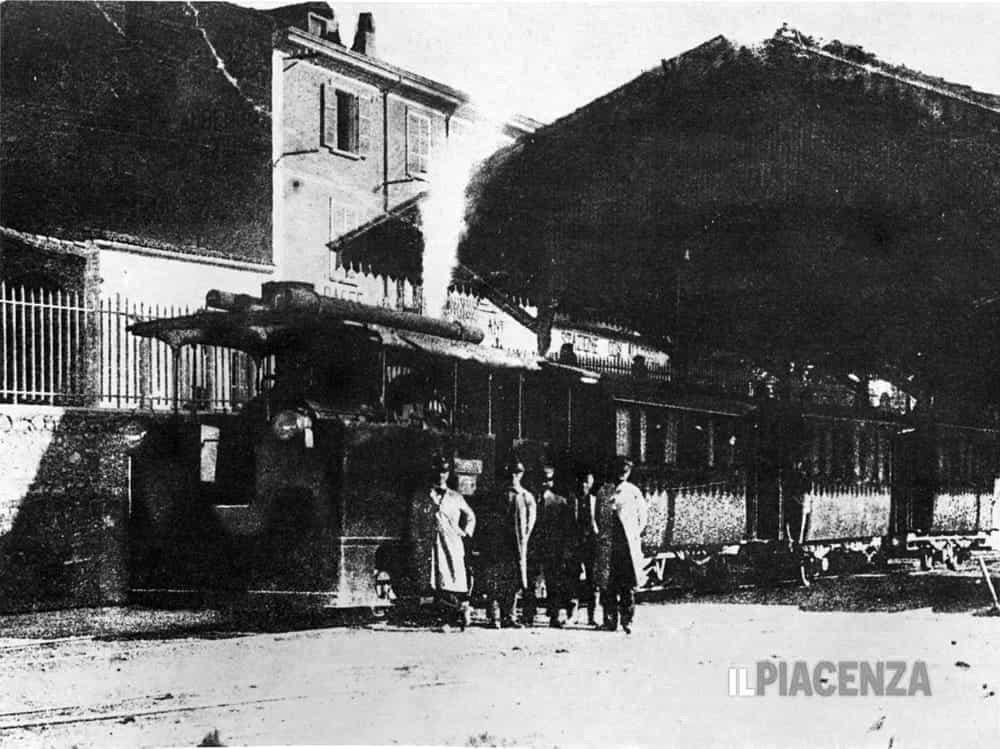 Bettola tram station
Bettola tram station
Grazzano Visconti tram station
Bettola tram station
Bettola tram station
Grazzano Visconti tram station
1927
The project for an electric railway was presented from Politecnico di Milano ing. Marco Semenza and Arturo Danusso to the Ministry of Public Works.
After a few years, the Province gave a large contribute to activate a program of modernization, which consisted of the construction of electric railway lines that would substitute the old tramways: they would work especially on Bettola, Carpaneto Piacentino and Nibbiano lines.
1930 July 7
The construction of the electric railway starts, destroying the old tramways. It cost more than 30 millions of lire.
1933 June 27
The electric railway is active one year after the ceremony from Piacenza to Grazzano Visconti. After September the line is active all the way to Bettola.
The construction works for the electric railway Piacenza-Bettola, whose project was presented in 1927 from ing. Marco Semenza and Arturo Danusso to the Minister of Public Works, started on July 1930. The more the construction was ongoing, the more the old tramways were destroyed. The new line cost more than 30 millions of lire: it started from Piacenza station in Piazzale G. Marconi, close to the FS station. Leaving Piacenza, the line would go south and cross San Bonico, staying parallel to the Bettola provincial road: after 22 km it would reach Ponte dell’Olio and Nure river, where a curved reinforced concrete bridge would cross it. It was one of the first bridges of this type built in Italy.
From Ponte dell’Olio, following Nure valley and the provincial road, the railway reached Bettola. The line was one rail only, except a small section near Piacenza, and was 31,700km on own rails, and 1,300
km on road but separated from the ordinary traffic. The contract, undersigned in 1930, was of 70 years for a 50 years service life, with 53.649 lire per km. Along the railway 63 rail crossings were built, mostly on private roads, 3 bridges, several canton houses, 4 stops and 11 stations, including Piacenza station where the repair shop, the deposit and the administration offices were collocated. The line was joined with 4 marl quarries in Val Nure, with a AGIP plant in Podenzano, and 6 different factories in Piacenza. The rails were 36 kg/m, and the profile had curves of not less than 300m as minimum radius: the inclination was never more than 20%, and the maximum speed was 60km/h.
The electric railway was powered by a 3000 V system in the Ponte dell’Olio substation. The price of a ticket from Piacenza to Bettola was 10,65 lire in first class, and 8,20 lire in third class.


The opening ceremony was on April 21, 1933, but the opening of the line to the public was postponed of a few months for economic issues. From July 27, 1933 the trains, which still had components from the old tramways, began their rides from Piacenza to Grazzano Visconti, where the station was out of the city center. The section from Grazzano Visconti to Bettola stopped working on September 2, 1933.

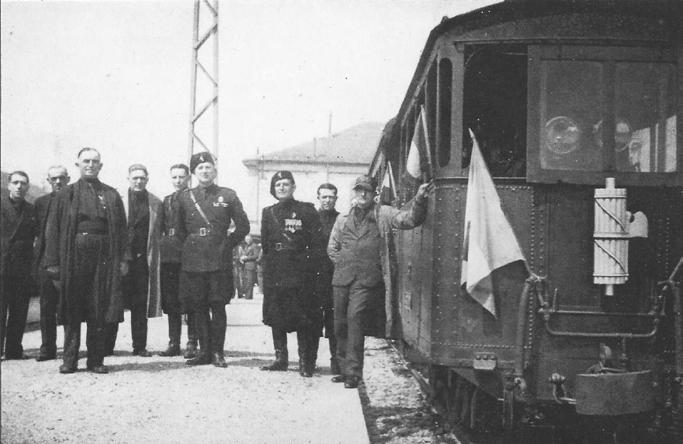 Piacenza S.I.F.T. station
Farnesiana bridge
Official opening ceremony -1932
Piacenza S.I.F.T. station
Farnesiana bridge
Official opening ceremony -1932
During WWII the service continued to let people leave Piacenza to the countryside. Ponte dell’Olio bridge was especially bombed and damaged.
After 2 years from WWII end the line was completely restored, both for goods and people.
2 more wagons were bought, and 2 diesel locomotors, used on the junction of Cementirossi in Piacenza.
In the early 30s, to substitute the old passenger cars and tram locomotors SIFT ordered to Officine Meccaniche Italiane di Reggio Emilia several electromotives carriages and towed carriages with the proper characteristics for the expected traffic. After cutting down on the modernization program, the lines for Lugagnano, Agazzano and Nibbiano were substituted with S.E.A. buses (Società Emiliana Autoservizi): then S.I.F.T. bought 3 electromotives and 2 control cars. The electromotives weighted 54 tons and could reach the maximum speed of 120km/h. Mostly similar were the control cars, with a weight of 36 tons. For the goods transportation, Breda and CEMSA built 2 electromotive carriages, and their maximum speed was 60km/h, weighting 58 tons. The arrival of the new material really helped to shorten the travel times. From the fall of 1933, people could travel on more comfortable trains, with heating and a first class area. The new convoys took 45 minutes to complete the ride. In the late 30s, to cope with the increasing traffic, S.I.F.T. was forced to put in service some of the old convoys.
War consequences, with its intensive bombardments, didn’t wait to involve the railway service, causing several interruptions and disservices. Nonetheless, the activities on the railway continued, especially to leave Piacenza for the countryside, so much that on October 1943 10 couple of trains were still in service, reaching Bettola and Ponte dell’Olio. After restoring the line, with a solemn ceremony on summer of 1947, S.I.F.T. decided to act fast to increase the quantity of motors and cars. In 1955 2 more wagons were bought, and 2 diesel locomotors, used on the junction of Cementirossi in Piacenza.


In the late 50s, the traffic was on average of 1 millions of passengers each year, with a revenue of 100 millions of lire. The goods traffic though was hit by the recent technological developments in extraction systems and processing of marl quarries, and the transportation was more and more on road thanks to the flexibility of trucks. So a sensible drop in material was registered in the early 60s: from 416000 tons in 1960 to 218000 tons in 1964. Each day 1800 tons were transported on road, while only 300 tons on rails. Even some factories belonging to S.I.F.T. were using more trucks than trains to transport their materials.
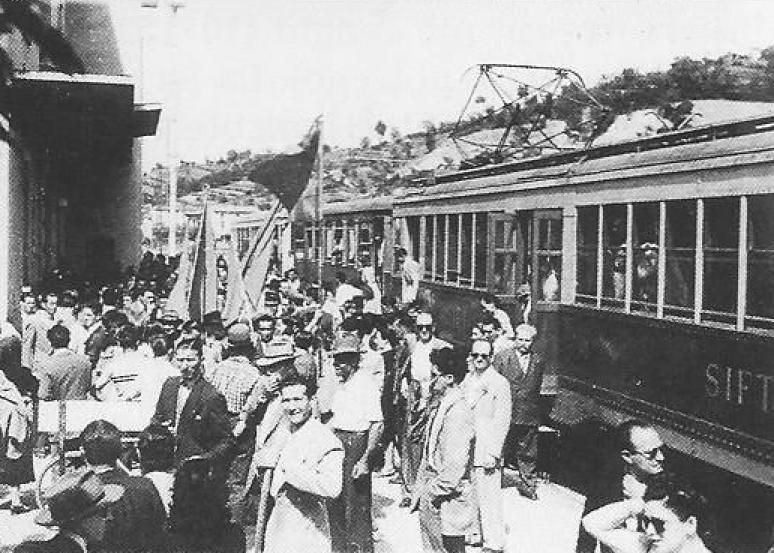 Ponte dell’Olio station
Opening ceremony after WWII
Grazzano Visconti station
Ponte dell’Olio station
Opening ceremony after WWII
Grazzano Visconti station
1965 April 22
The Minister of Transport decided on the suppression of the Piacenza-Bettola line.
Between 1958 and 1964 the costs to maintain the line went from 171 to 223 millions, while personnel costs went from 82 millions to 138. SIFT was then forced to cut on costs both on staff and services.
Until then the railway had been used by tourists, but also workers and students that every morning reached Piacenza. (within one hour the first 3 rides in the morning carried almost 1000 people to Piacenza)
1966 December 8
The “Comitato di difesa per la Piacenza-Bettola” declared a day of protests.
1967 April 30
The Piacenza-Bettola railway ceased to exist, to leave the place to the new bus services that departed from Piazza Cittadella.
On April 22, 1965 the news that the Minister of Transport decided on the suppression of the Piacenza-Bettola line, and its substitution with a bus service, arrived in Piacenza. The decision was then postponed because of the increasing protests from the Val Nure population. The Province Administration, with several MPs and mayors of the area, had been able to convince the Minister to keep the line in service. During a congress on June 1965, the vice secretary of Camera Conferedale del Lavoro in Piacenza denounced some events that questioned the management of the railway in the last years: the staff was used with questionable criteria, convoys often departed without the required personnel, and in some downhill areas between Bettola and Ponte dell’Olio the pantograph was lowered to save electricity. From March 23, 1966 S.I.F.T. was forced to reduce the speed of all convoys.
On September 29 the ministerial commission suggested again the suppression of the line. After the substitution of two rides with buses, and after the Minister of Transport announced the transformation of the railway into bus service, the “Comitato di difesa per la Piacenza-Bettola” declared December 8, 1966 a day of protests. From January 1967 the rides became four and during festive days the entire service was done by buses.
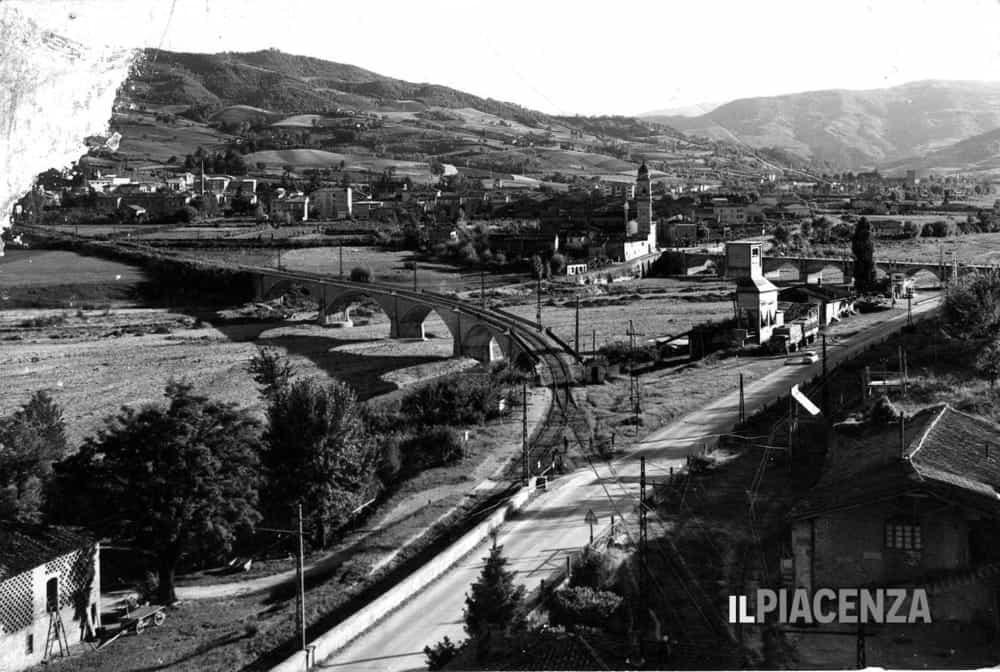

Following the constant stream of protests, S.I.F.T. was forced to substitute the bus services again with trains, because of the longer travel times (10-15 more minutes by bus). The Piacenza-Bettola railway was never considered obstructive to road traffic, compared to other lines. Until the very last days of service, the population favored the railway, with more and more protests: on February 8, 1967, near Biana, a crowd blocked the bus that had on board the ministerial commission, during a survey on the railway conditions. The last day of service, on February 28, 1967 was postponed a few more months. On April 30 1967 the Piacenza-Bettola railway ceased to exist, to leave the place to the new bus services that departed from Piazza Cittadella, in Piacenza. Part of the material was demolished, while some electromotives were sold.
 Trains in S.I.F.T. Piacenza deposit
Ponte dell’Olio curved bridge
Train in last days of service
Trains in S.I.F.T. Piacenza deposit
Ponte dell’Olio curved bridge
Train in last days of service






The first map from 1881 collects one of the first mapping of Italian territory made by Istituto Geografico Militare, called IGM primo impianto. The informations collected through the span of 12 years (1881-1893) are put together giving a clear image.
Analyzing Val Nure it is possible to see the system of infrastructures of the time, from streets to dirt roads, and the work on the tramway halfway done (the tracks arrive until San Bonico in the map). It is also visible the tramway going towards Castel San Giovanni, which was shut down and never converted into an electric railway. The urban areas are much smaller than the actual ones, and Piacenza is still confined inside its walls.
During this time Bettola had assumed the name Borgonure, and it is signed as that on the map. The forest areas of Val Nure were more extended and the amount of vinyards was much larger than right now.

The landscape goes from primarily crops, meadows and vineyards to forest/woods and vineyards the closer it goes to the hills.
Row of trees divide each crop and proprerty, as well as water channel collecting water from Nure river.


IGMI flight collects all aerial photographs done between 1954 and 1955 during the flight IGMI-GAI (Gruppo Aereo Rilevatore). The result is a geometrically corrected and georeferenced complete ortophoto. The collection was taken after WWII and the changes after 73 years from the first IGM. The major differences are the expansion of the urban centers: Piacenza espanding outside the walls and smaller cities like Vigolzone, Podenzano and Ponte dell’Olio showing more relevant on the map.
The railway has been completed and also restored after the damages during WWII, it is shown to cross Val Nure, sometimes side by side with the Provincial road. The railway reaches Bettola and also the marl quarries around the area.
A significant difference from 1881 map is the lack of vineyards in the Piacenza area, the crops take the majority of the fields and meadows decreased to leave place for city expansion.
There are fewer row of trees dividing the crops, but more vegetation around larger water channel. Forest/ woods decreased to leave more space for cultivation even on higher ground. Regarding infrastructures more road got built especially connecting Bettola to other hill towns.



The synchronic map is the result of all the informations collected from the older maps, and confronting them to the actual landscape. Comparing the recent situation the difference are striking in terms of urban centers, Piacenza has further expanded outside the walls, and cities like Podenzano, Vigolzone and Ponte dell’Olio expanded as well with new residential neighborhoods around the historical centers. Bettola on the other side didn’t expand much, the result of the lack of real connection between alta Val Nure and the main center of Piacenza.

The vineyards further decreased and some changed site since 1954. The strong presence of crops and agriculture has increased during the years, making it a fundamental part of Val Nure. Both lower and higher valley have left spaces to cultures, decreasing the woods area. The railway has disappeared from the map but it is still visible in the layout of the smaller cities, and in the new Provincial road which took its place.
Infrastructures mantained the original network but the street to Val Nure changed course around San Bonico, becoming the former railway path. The primary streets follow the main water streams that are coming from Nure river. The rest of water canals divide crops and properties.
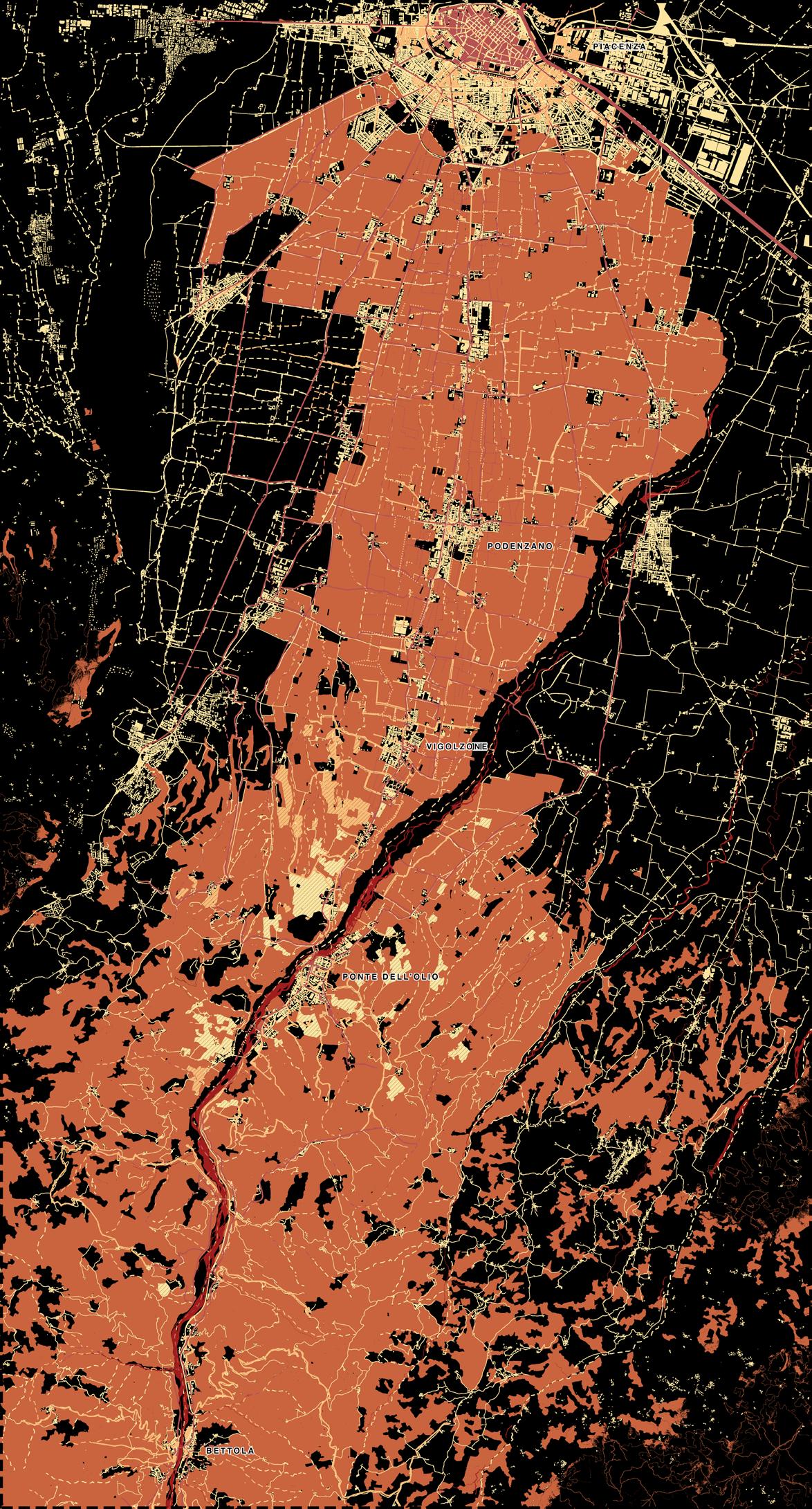


This map shows the current land use from Piacenza to high Val Nure. The lowland is mainly composed of crops and agricultural fields, surrounding the cities. Water channels divide the crops and bring water for irrigations. Nure river crosses the area until reaching Po river and it is a main component.
The presence of vineyards is concentrated around Vigolzone and Ponte dell’Olio, and they produce especially two types of local wine, a white wine called Valnure and a red wine called Gutturnio.
The tree presence is mainly to divide crops and around water streams in the lowland, but in Bettola area woods are the main landscape, and they alternate with non-irrigated crops: this creates a vegetation variety from the valley to the hills, with different trees and views.
The provincial road connects Val Nure, and in different places it took the place of the former railway: the road crosses all towns and reaches Bettola in a almost straight line.
Considering the landscape characteristics and the heritage, the best options to know best Valnure look to be a bicycle path and the exploration of agriculture in periurban areas, keeping the farming traditions of the region and connecting them more to the citizens.



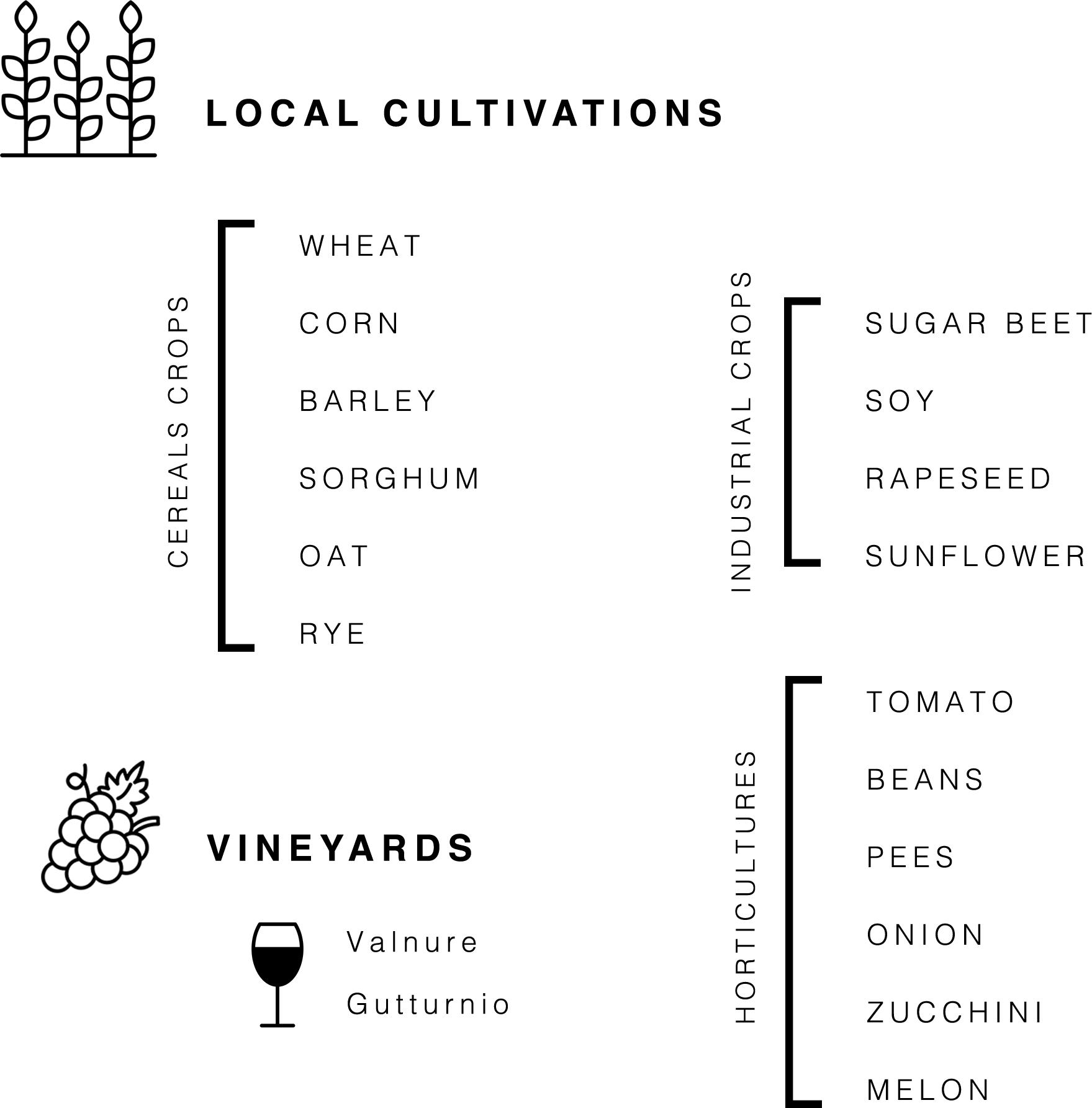
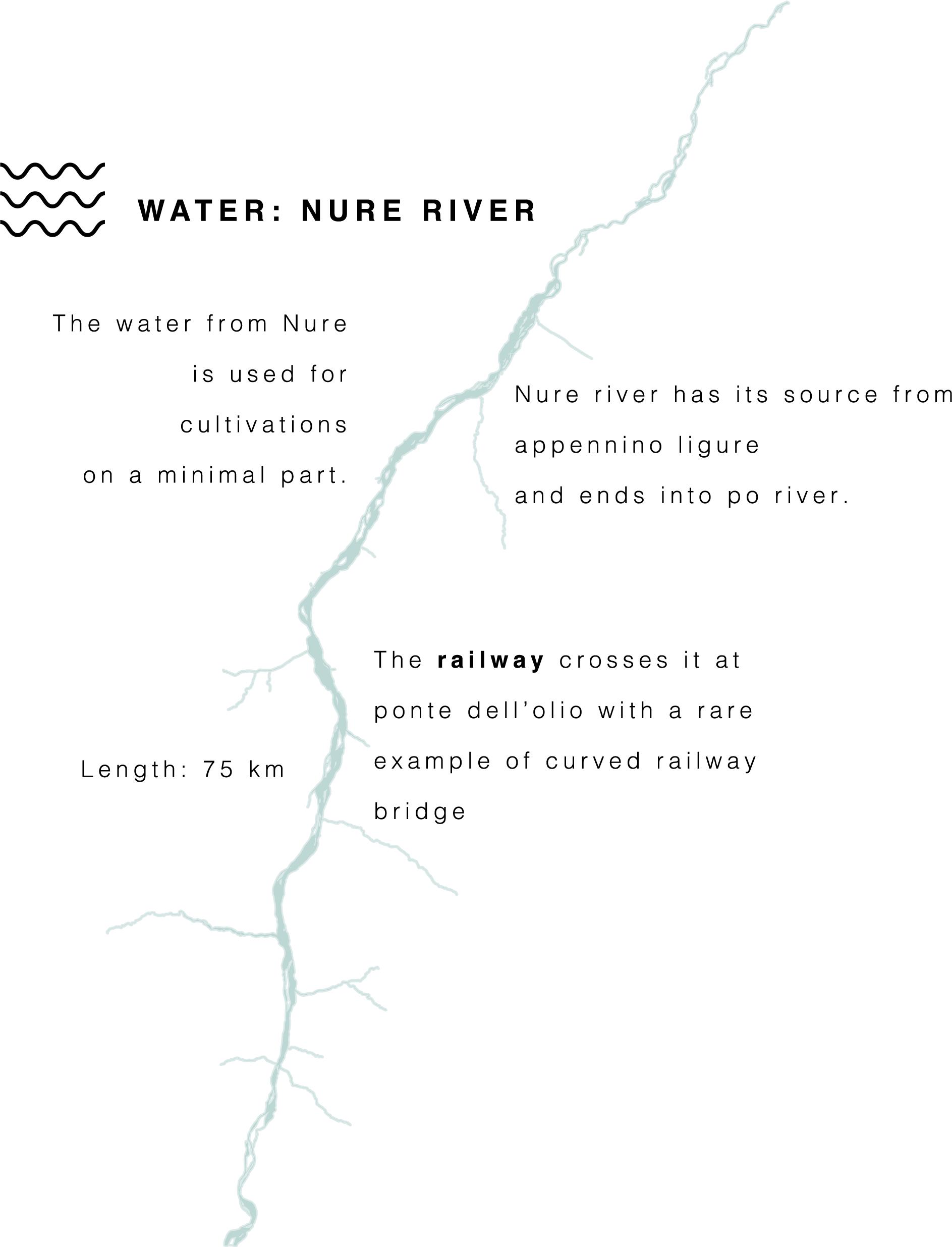

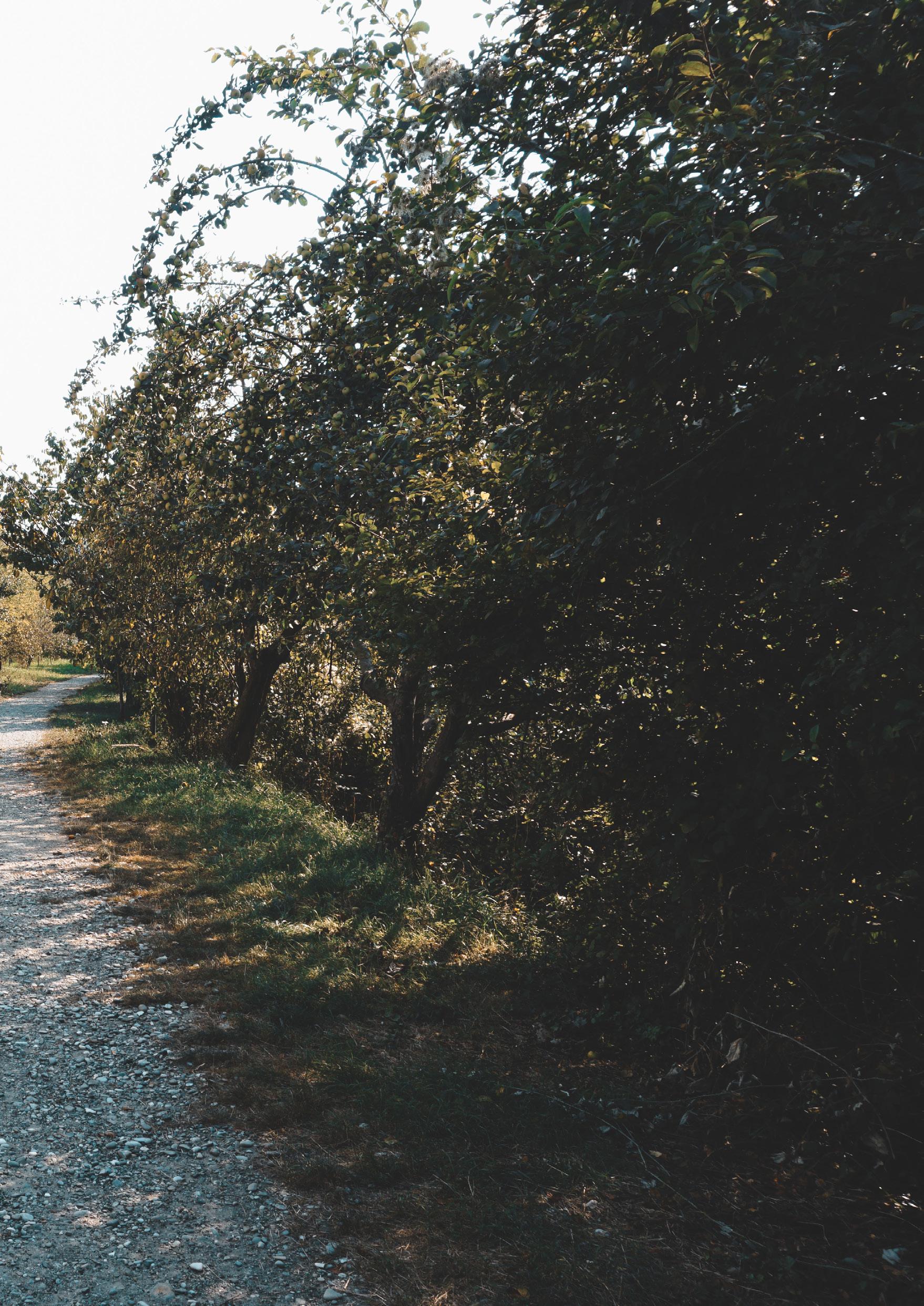
Since the railway was dismissed the rails were removed on most of the length, and the tracks changed more or less drastically in appearance. In Piacenza center some rails are still left from the S.I.F.T. tracks, the ones going towards the military area (Ex Arsenale). The traces left also became bicycle paths, on own site and in-roadways, mainly following the Provincial road. The railway has become the track for part of the new Provincial road, continuing to be the physical connection between Piacenza and Valnure. Other traces can be seen in the dirt roads and row of trees around the crops, or no traces at all in new crops that are divided differently than during the railway times. Other traces can be found in the layouts of the Valnure towns, as secondary roads of mainly residential areas. In some cases no traces are visible at all, as the urban expansion of those cities covered them. Regarding the train stations and auxiliary buildings, some are still visible and recognizable on the path, while other were demolished or reconverted. Most of stations are now residential buildings, with the exception of some like Ponte dell’Olio station and Biana station, which became restaurants, and Bettola station which is used as a deposit of construction materials.











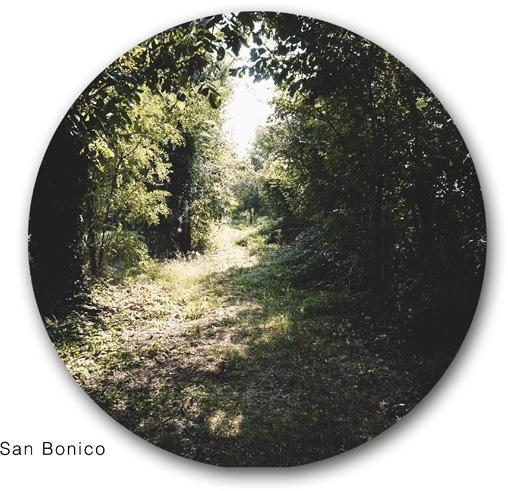













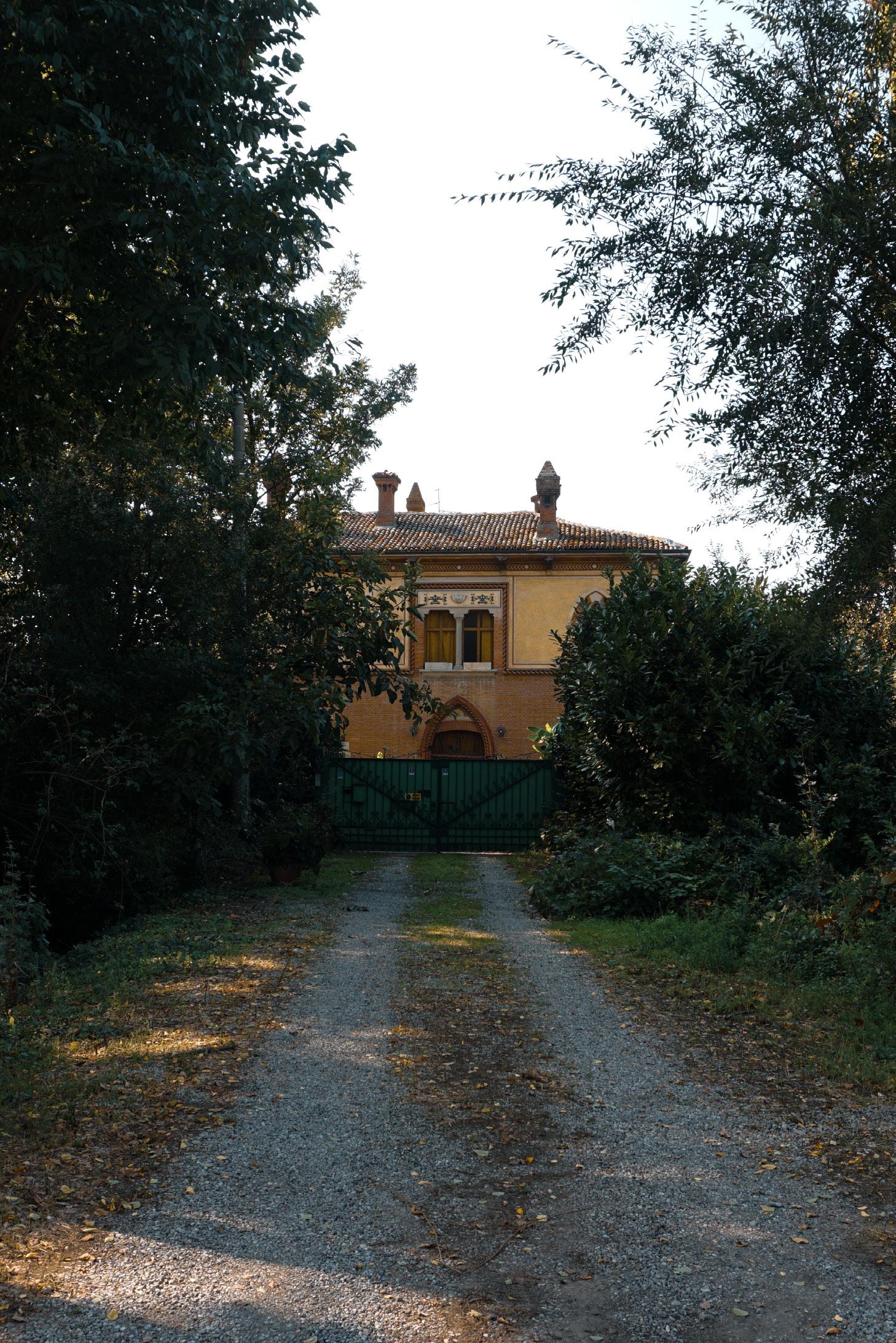 Grazzano Visconti station
Grazzano Visconti station

 Ponte dell’Olio electric station
Ponte dell’Olio electric station
 Ponte dell’Olio station
Ponte dell’Olio station
 Molino croce station
Molino croce station
 Biana station
Biana station
 Recesio station
Recesio station
 Bettola station
Bettola station